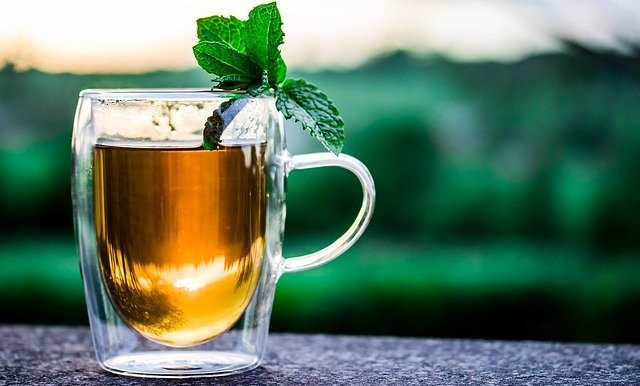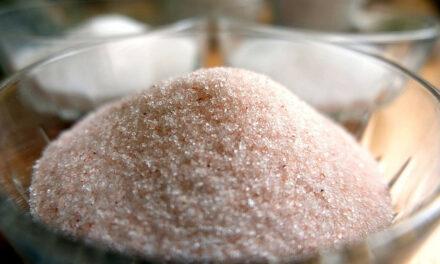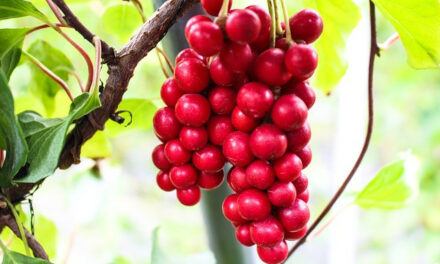What comes into your mind whenever you hear the word, Peppermint? For some people, Peppermint is just a flavor used in chewing gums and mouthwash to freshen your breath. But more than that, Peppermint is a calorie- and caffeine-free beverage that awakens the mind, it’s a flavor used in delicacies all over the world. And most importantly, it provides numerous health benefits to its consumer. But, you might be asking is peppermint tea good for diabetics?
If so, everything you need to know about peppermint tea and diabetes is here.
Let’s start by identifying what we mean by mints and peppermint.
Mint and Peppermint
Mints refer to all herbaceous plants in the genus of Mentra. These plants are known for their highly scented flavor. The mint family consist of more than 600 varieties which include peppermint, spearmint, orange mint. Etc.
The mint herb is composed of a variety of constituents which includes;
Menthol,
Methyl acetate,
Iso-valerate,
Methane,
Cineol,
Polyphenols etc.
And, each species differing in the proportions of these constituents.
Peppermint, due to its greater menthol content, has a far stronger flavor than any of its relatives, giving its distinct cooling taste.
Polyphenols and other substances present in Peppermint is responsible for its protective and therapeutic characteristics.
Types of Mint Tea
Mint tea is one of the most popular herbal beverage in the world due to its refreshing characteristics. This tea is produced from the leaves of the plant. It has a cooling sensation, and appealing aroma has made this beverage very popular, even amongst cultures in the world. Mint tea could come as pure mint tea or mint tea-blends, either way, it’s a refreshing taste, and aromatic sensation remains.
Pure mint tea includes;
- peppermint tea,
- spear mint tea,
- field mint tea,
- water mint tea,
- lemon balm tea etc.
Mint Tea Blends
Mint tea-blends includes;
- Moroccan mint tea
This tea is named after the country Morocco, the biggest growers of mint herbs in the world (growing about 95% of it). It’s held in high esteem by the people of morocco, just like green tea is to China.
This is one of the most popular and famous mint tea-blends. It is made from the mixture of spearmint tea and green tea and is just as refreshing as all mint teas.
- Chocolate mint tea
The mixture of mints and chocolate is not only good in candies but also in teas.
- Apple mint tea
This tea-blend combines the minty flavor of peppermints and the fruity aroma of apples into a tea bag. The apples could be added to the mint tea also as slices or its juice to prepare the blend.
Peppermint Tea
Peppermint tea is by far the most popular mint tea bag in the world, preferred in a number of tea-blends to spear mint tea.
Interestingly, peppermint tea has not always been popular. It was produced from the hybrid of spear mint and water mint. It’s distinct from all other tea due to its chemical composition, containing about 40 per cent more menthol than its relative and parked with Anti-oxidants that is helpful to its consumers health-wise.
Peppermint tea has been described as a soothing, refreshing and relaxing drink that can be compared to none.
Health Benefits of Peppermint Tea
Peppermint is known to freshen the breath and prevent mouth odor. Even more, peppermint has proven to be advantageous to both the body and the mind with the following benefits.
- Enhancing brain function
The intake of this caffeine-free beverage is a better alternative to coffee.
A number of studies, including the Northembric University and Leiden University, found that peppermint tea improves cognitive functions like; enhancing concentration, improving your memory and mood. So thus, a cup of peppermint tea before an examination, or a work presentation will be of great benefit.
- Gains to the gastrointestinal tract
Peppermint tea intake aids digestion and prevents constipation. It has been used for a long time to treat constipation and bloating. It relaxes the muscles of the stomach and intestine, thereby preventing spasm. It protects the liver also and prevents flatulence.
- Restoring body function
Headaches can result from stress, tension and even poor diet. Research has found that peppermint could relieve such “stress-headaches” for both adults and children.
- Protective function
Just like most herbal drinks, peppermint naturally protects the body from fungi and viral infections.
A study carried out by the Department of Virology, University of Heidelberg, Germany, indicates its ability to fight against viruses. Also, tested with fungi, peppermint has proven to be antimicrobial.
Other than boosting your immune system, relieve pains, aid digestion and enhance concentration, Peppermint is also proven to have a positive effect in lowering the blood sugar level of a diabetic.
Tip: Here are the best herbs for diabetic neuropathy, out of which peppermint is one not to ignore.
Blood Sugar Level of a Diabetic
In a normal healthy person, the blood sugar level is meant to be between 70-110mg/dl. For a pre-diabetic, blood sugar level rises to above 150mg/dl. But for a diabetic, blood sugar is above 200mg/dl.
A diabetic cannot process sugar to energy, and thus sugar is retained in the blood. This condition is referred to as Diabetes Mellitus.
There are two main types of diabetes, Type 1 and Type 2, categorized based on the cause;
- Diabetes Type-1 is caused by the body’s inability to produce enough insulin.
Insulin is a hormone that communicates with some body organs to store excess sugar. When the insulin produced by the pancreas is not sufficient to convert the body’s sugar, excess sugar is retained in the blood.
- Diabetes Type-2 is the most common type of diabetes, making about 95% of all diabetes patients.
It results when the body does not respond to the insulin produced, hence leading to abnormally high blood sugar level.
This unbalanced blood sugar level can lead to the destruction of important body organs like the eyes in diabetes retinopathy, the heart and blood vessels. Hence, people with diabetes should work toward managing the condition by reducing their sugar intake, and taking drinks and medications that reduce their blood sugar level.
Peppermint tea is one of the few herbal teas that can affect blood sugar level. Although there have been only a little research to support this, it has been found that some compounds contained in peppermint tea reduce blood sugar level.
How Can Peppermint Tea Affect Blood Sugar Level?
Peppermint, as earlier said, contains numerous antioxidants responsible for its health benefits. Among these, polyphenols is note-worthy, as research has shown that its intake reduces the blood sugar level of its consumer. Though Peppermint is not the only plant with this organic compound, a 2010 study identifies dried peppermint as the second in 100 food richest in polyphenols, containing about 11900mg of polyphenols. In order words, peppermint is considered one of the richest in this “healing” compound.
Polyphenols have proven to help treat both acute and chronic ailments including obesity, cardiovascular diseases and diabetes. For that reason, it has been of recent a major topic of interest to nutritionist due to its many health benefits.
What are Polyphenols?
Polyphenols refer to a group of organic compounds found in natural herbs and plants. Polyphenols is a group of antioxidants divided into two main classes which is flavonoids and non-flavonoids.
Flavonoids are divided into
- flavones,
- flavonols,
- isoflavones,
- anthocyanin and
- catechins.
Anthocyanins and catechins, according to research, are the polyphenols responsible for reducing the blood sugar level. They work to reduce the blood sugar level by improving insulin resistance.
Insulin resistance is responsible for diabetes type-2. In this case, target cells in the liver, muscles and fat cells do not respond well to insulin. As a result, sugar is not converted and stored. Polyphenols acts directly on this insulin, activate it and makes the target cells more receptive.
What Research Say?
A 2020 study on the effects of polyphenols on insulin resistance in the department of nutrition, dietetics and food has revealed the effectiveness of polyphenols in managing diabetes mellitus.
The human intervention studies on volunteers showed that the known subclass of the polyphenols effective in improving insulin resistance was Catechin-containing food and Anthocyanin, which are all present in peppermint tea. In our diets and teas, catechins and anthocyanins are absorbed in the small intestines, transported into the blood from there and then to target cells of the liver, muscles and fat where it exerts its effect.
Tip: Peppermint oil is one of the Essential Oils, just like Eucalyptus Oil.
Studies have also shown that individuals who take flavonoids, an antioxidant contained in peppermint, have a lower risk of developing type-2 diabetes. And although the mechanism to which polyphenols improves insulin resistance is still not clear, it is a fact that the intake of polyphenols in the diet is effective in improving insulin resistance and reducing blood glucose level.
However, more research need to be carried out in order to give proper dietary advice and prevent metabolically-induced complications.
Is Peppermint Tea Good for Diabetics?
Apart from activating insulin and improving insulin resistance, there are some other ways diabetics can benefit from this tea.
Peppermint as a tea is good for rehydrating the blood. According to research, dehydration could adversely increase the risk of diabetics. And so, one of the ways of constantly managing diabetes is by constant rehydration, with water or tea.
The European Food Safety Authority recommends 1.6-2.0 liters of water a day for diabetics. More so, an interesting alternative to water is peppermint tea due to its sweet and refreshing taste.
When the blood sugar level is high, the body searches for alternatives to rehydrate the blood and thus, makes use of body fluids like saliva and tears. This would further lead to complications like diabetic ketoacidosis, diabetic coma and even death. But like water, peppermint tea can help to dilute excess sugar in the blood of a diabetic which the body passes out as urine.
Furthermore, drinking calories free beverage is another important way of managing diabetes. For a diabetic, sugar-containing drinks will only increase risk and cause organ damages. But the intake of unsweetened herbal teas like peppermint tea will give the needed refreshment and as well manage the ailment.
More so, diabetes can alter the metabolism of fat and sugar in the body, thus causing indigestion. The intake of peppermint tea daily, however, can aid digestion of fatty food by increasing bile production in the liver.
Damage to the nervous system by diabetes could also lead to nausea, vomiting and constipation, which, of course, is discomforting to patients. This condition is called Gastroparesis. And it’s a symptom of diabetes. It’s characterized also by bloating and abnormal pain which could be helped treated effectively with peppermint tea.
When is Peppermint Tea Bad to Diabetics?
So much as peppermint tea is one of the best choices for a diabetic, it must be moderately drunken. It is recommended that 2-3 cups per day (maximum) is needed to reap the benefits. Drinking too much of peppermint tea could pose adverse effects to its consumers.
Furthermore, peppermint tea is recommended to be taken unsweetened by diabetic patients. It remains a task to control their sugar intake so as to keep their blood sugar level in check. And so, for this tea to be effective in controlling diabetes, it must be taken unsweetened, without sugar or any form of sweetener.
More so, it is important that before peppermint tea is consumed from its tea bag, its content is duly checked and approved by medical personnel. It is a known fact that some herbs have the ability to alter medications. And so if the tea bag contains such ingredients that alters the medication of a diabetic patient, it would rather be of harm to the patient.
Furthermore, a lot of patients while growing these herbs in their gardens would prefer to make these tea themselves. Still, there are ways with which these tea leaves could be prepared which would alter its components and make it useless or harmful to the body, and so, it is best to stick to recommended and healthy ways of preparing this tea, so as to retain its nutrients and flavor.
Healthiest Way of Preparing Peppermint Tea
Peppermint tea could be made from already processed tea bags or peppermint leaves in different ways. From peppermint leaves, common recipes include;
1. Pure hot mint tea
Ingredients:
A handful of fresh peppermint leaves,
Hot water.
Sweetener (may not be recommended for diabetics)
Instructions:
- Pound the tea leaves with mortar and pestle to bring out its flavor
- Add the hot water to it. Hot water is best used when crushing tea leaves.
- Steep the tea for 5-10 minutes.
The purpose of steeping tea is to extract it’s flavor and makes it softer. Steeping involves soaking the leaves, either crushed leaves or intact leaves so as to extract the beneficiary compounds from it.
In steeping, it is advisable to stick to the recommended time, as overstepping your tea will make it bitter
2. Pure Iced peppermint tea
Ingredients:
2 handfuls of fresh leaves or 4 teaspoons of dried leaves
Hot water
Freshly squeezed lemons.
Instructions:
- Crush the fresh leaves
- Cool your boiled water for 1 – 2 minutes
- Add it to the mint leaves and steep it for 5-10 minutes
- Strain the dried or fresh leaves from the tea and pour the tea into a jug
- Allow to cool to room temperature then place in the refrigerator for 3 hours
- Pour over ice and serve.
3. Peppermint and ginger tea:
Ginger, as well as peppermint, is a versatile plant with protective and therapeutic advantages, blending both plants will give extra value to the tea.
Ingredients:
1 handful of fresh mint leaves
Cup of water
Piece of ginger
Lemon slices
Cinnamon stick
Instructions:
Add the water and ginger and lemon slices
Bring this to near boiling temperature
Add the mint leaves and steep for 2 to 3 minutes
Add the cinnamon stick and lemon for garnish.
4. Fruit-blend peppermint tea
This blends fruity aroma of apple, orange or lime and refreshing taste of peppermint.
Ingredients:
Fresh mint leaves
Boiling water
Any fruit of choice, either as juice or fruit slice
Instructions:
Add the mint leave and the flower (if used) to the boiling water
Remove the leaves and add the fruit slices or juice
Chill in the refrigerator for 3 – 4 hours.
Pour over ice cubes and serve garnished.
From teabags, use the instructions written behind the pack to prepare a healthy drink. Furthermore, for digestion problems, dried peppermint leaves are better for teas than fresh leaves.
Other Types of Tea Diabetics Can Drink
With regard to hydrating the blood, all unsweetened herbal teas are recommended for diabetics. Furthermore, there are some teas that contain the right antioxidants beneficiary to a diabetic. And, they include;
Black Tea
It is made
from the leaves of the Camellia sinensis plant. Although it is called black tea, it is normally referred to as “red tea” because the brewed color of this beverage is reddish.
Black tea, unlike peppermint tea, contains little calories. It also contains about 50-90mg of caffeine in every cup. But this quantity of caffeine could be safely reduced by adding blends like milk and fruits to this tea.
This tea has an equally strong flavor and has grown to be very popular in the western part of the world. In addition to its strong flavor, it is packed with antioxidants, including polyphenols that reduce blood sugar level and improve the general body function.
Other health-related benefits include;
- Aid in preventing disease
Black tea because of its chemical composition, is effective in treating both acute and chronic ailment. It is rich in catechin and flavonoids.
- Cures gastrointestinal diseases
Recipe for processing black tea:
Brew the tea leaves of the camellia sinensis in boiling water for 5 minutes, Chill the mixture in the refrigerator for about 3 hours, pour this over the ice and serve.
Oolong Tea
Oolong tea is also prepared from camellia sinensis plants, the same plants used to make green tea. The difference between these teas is the different ways they are brewed, that is to say, while black tea is fully oxidized, oolong is partially oxidized.
Certainly, oolong tea will contain the same constituents as black tea since it’s made from the same leave, and it will provide equal benefits as black tea. However, Oolong is said to have an additional benefit, it strengthens the tooth enamels which is due to the fluoride it contains.
Tip: This article explains other types of teas and how they could affect diseases such as high blood pressure.
Conclusion
Flavonoid-rich peppermint tea has in research, proven to be helpful to diabetics, even though more research need to be carried out so as to administer the right dosage of this herbal tea. Animal studies and test-tube research also gives positive results to the blood sugar, reducing properties of peppermint tea. In other words, this beverage will manage diabetes mellitus but only if taken in recommended and healthy ways.










